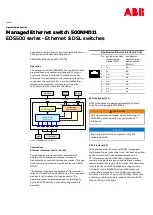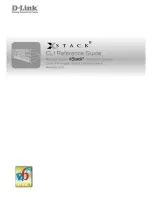
5. Device Concept
UCX series – User's Manual
33
Applied firmware package: v1.2.0b9 | LDC software: v2.5.10b1
The table below shows the correlation of the video resolution and the assigned lanes:
DisplayPort Video
DisplayPort Alternate Mode
DisplayPort
Standard
Raw
bandwidth
(1 lane)
Display
Resolutions
2-Lane DP
4-Lane DP
BW
Display
Resolutions
BW
Display
Resolutions
HBR1
(DP 1.0 / 1.1)
2.7 Gbps
1440p@60 Hz
5.4 Gbps
1 × FullHD
10.8 Gbps
1× 4K@30 Hz
HBR2
(DP 1.2)
5.4 Gbps
4K@60 Hz
10.8 Gbps
1× 4K@30 Hz 21.6 Gbps
1 × 4K@60 Hz
5.3.2.
DisplayPort Alternate Mode and USB 3.x Mixed
The two different signals (video and USB 3.x) can be transmitted at the same time with shared bandwidth.
DP video reserves 2x Superspeed Channels for the video signal in alternate mode. 2x Superspeed Channels
for USB 3.x
This setting can be configured manually via
Software Control - Lightware Device Controller
or via
LW3 protocol commands (for more details see
section).
5.3.2.1.
Thunderbolt Compatibility
Thunderbolt 3 standard uses USB-C connector to transmit data. The standard is compatible backwards,
so it is able to fallback Displayport Alternate mode. In this case, the maximum bandwidth of transmitted
video signal based on the connected sink capability ( e.g. HBR2, 5.4Gbps per lane in case of UCX-4x2-HC30
switcher).
DP1.2
HBR2
DP Lanes
(5.4 Gbps)
USB 3.1
(5 Gbps)
5.4.
The Autoselect Feature
DIFFERENCE:
The autoselect feature for USB layer is available only from FW package v1.1.0b7.
Beside of manual selecting of crosspoints you can choose the Autoselect option in case of video and USB ports.
Video input source can be selected the following ways:
▪
using the front panel buttons
▪
using Lightware Device Controller (LDC)
▪
sending LW3 protocol command or
▪
using the Autoselect function.
There are three Autoselect policy as follows:
▪
Disable autoselect
▪
First detect
▪
Last detect
▪
Follow video (in case of USB and audio ports)
INFO:
SignalPresent cannot be sensed on I1 if i5 is displayed due to the mutually exclusive operation of
video input I1 and the internal Welcome screen image generator I5. Welcome screen image will disappear
and the video XP will be switched to I1 upon connecting a Host computer to I1 regardless the computer
sends Displayport image or not.
Individual input settings
This setting defines the priority level of the port. The priority property is valid both for first detect and last
detect operation modes. It overrides the chronological order of the appearance of the active video signal.
Always the highest priority active input is selected to transmit (1- highest priority, 100- lowest priority).
TIPS AND TRICKS:
To use the individual input settings, change the default priority settings from 1 to 5
depending on their importance (e.g. I1 priority:1; I2 priority:2; I3 priority:3; I4 priority:4; I5 priority:5 ).
ATTENTION!
The autoselect function remains active after the manual crosspoint switching. This operation
mode works contrary to the other Lightware matrix switchers or extenders).
Disable autoselect
The crosspoint state change only happens manually.
First detect
The selected input port is kept connected to the output as long as it has an active signal.
The crosspoint changes, when the signal becomes inactive on the chosen input, or when the video signal
appears on a higher priority port.
TIPS AND TRICKS:
To prevail the first detect mode, default priority settings (I1 priority:50; I2 priority:50; I3
priority:50; I4 priority:50; I5 priority:100 ) are appropriate. Lower priority of the I5 port is highly recommended,
because this is an internal source with constant video signal, this port is always the first one.
















































